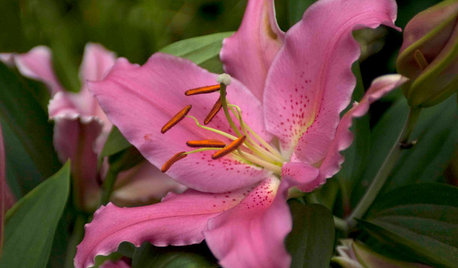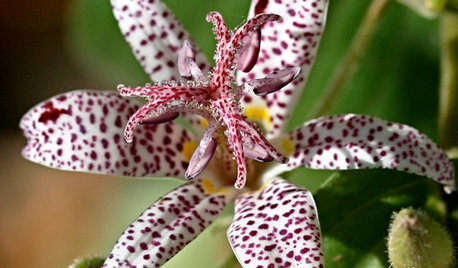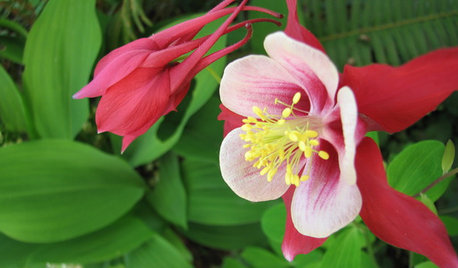Lily problem
north53 Z2b MB
10 years ago
Related Stories

FLOWERSGreat Design Plant: Lilies
Try these delightfully exotic stunners for paintbox colors, deep fragrance and intricately detailed petals
Full Story
SUMMER GARDENING10 Perennials to Extend Your Garden's Summer Color
Revive summer-weary gardens with outstanding late bloomers such as toad lily, Russian sage, blanket flower and more
Full Story
GARDENING GUIDESGreat Garden Combo: 3 Wonderful Plants for a Deer-Resistant Screen
Protect your privacy and keep deer at bay with a planting trio that turns a problem garden area into a highlight
Full Story
HOUSEPLANTSMeet a Houseplant With Excellent Communication Skills
It droops when thirsty, revives quickly and thrives under fluorescents. You may want to hire this hard worker for both home and office
Full Story
GARDENING GUIDESGreat Design Plant: Cannas
Easy to grow and maintain, these showy, colorful plants are perfect for beginning gardeners
Full Story
GARDENING GUIDES8 Plants That Snobs Love to Hate — and You'll Love to Grow
Don't dismiss these common annuals, perennials and shrubs — there are reasons they've been popular for so long
Full Story
DECORATING GUIDESDesign Lessons From a Stylishly Evolving Home
Create a fresh take on your existing space with inspiration from a Canadian designer's own home evolution
Full Story
GARDENING FOR BUTTERFLIESGreat Design Plant: Columbine Grows Happily in Shade and Sun
Its ethereal beauty comes from complex forms and wide-ranging colors, but columbine’s benefits are highly attractive too
Full Story
HOUZZ TOURSHouzz Tour: Picture-Perfect Simplicity
It’s like camping out in a catalog sometimes at this classic farmhouse — Pottery Barn and other retailers love it for photo shoots
Full Story
BEFORE AND AFTERSReinvent It: A Texas Bathroom Says 'Bonjour' to Salvage
Serendipity leads to vintage Parisian swank in this renovated bathroom, starring a French door in place of shower glass
Full StoryMore Discussions







User
Ginny McLean_Petite_Garden
Related Professionals
Oconomowoc Landscape Architects & Landscape Designers · Parole Landscape Architects & Landscape Designers · Westwood Landscape Contractors · Bridgeport Landscape Contractors · Elmhurst Landscape Contractors · Lorain Landscape Contractors · Red Oak Landscape Contractors · Waltham Landscape Contractors · Wentzville Landscape Contractors · Wethersfield Landscape Contractors · Everett Window Contractors · Fort Collins Window Contractors · Houston Window Contractors · Gardere Window Contractors · Deltona Window Contractorsdonna_in_sask
north53 Z2b MBOriginal Author
marciaz3 Tropical 3 Northwestern Ontario
User
shazam_z3
marciaz3 Tropical 3 Northwestern Ontario
northspruce
SouthCountryGuy Zone 4b-5 SE BC
north53 Z2b MBOriginal Author
SouthCountryGuy Zone 4b-5 SE BC
northspruce
SouthCountryGuy Zone 4b-5 SE BC
northspruce
SouthCountryGuy Zone 4b-5 SE BC
north53 Z2b MBOriginal Author
northspruce
Pudge 2b
jetred
SouthCountryGuy Zone 4b-5 SE BC
swontgirl_z5a
SouthCountryGuy Zone 4b-5 SE BC